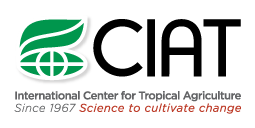International Year of Pulses 2016
Even though rice, wheat, and maize continue to have pride of place in CGIAR’s global crop research, pulses have enormous potential for helping confront some of the most daunting dietary and environmental challenges faced by smallholders.
For CIAT, the United Nations’ International Year of Pulses (IYP 2016) offers a welcome opportunity to celebrate the major impacts that our research on common bean has registered so far, and to call on donors and partners for renewed support.
Around 300 million people depend on common bean, making it the most important of CGIAR’s six mandate pulses. In terms of global production and area planted, donor investment in research on common bean has yielded especially high returns. According to a 2008 study, bean improvement had an estimated economic value of US$200 million – more than 12 times the cost.
Pulses will play fundamental role in our sustainable future, our #zerohunger futurehttps://t.co/8WmYbTtzSK #IYP2016 pic.twitter.com/FNykCgFfkm
— CIAT (@CIAT_) February 19, 2016

Sometimes referred to as the “meat of the poor,” beans provide a low-cost source of protein, complex carbohydrates, and valuable micronutrients. Yet, even this nearly perfect food had room for improvement. CIAT researchers and their national partners used a crop breeding approach called “biofortification” – under the auspices of CGIAR’s HarvestPlus Program – to develop bean varieties with higher levels of iron. These biofortified beans have been adopted by more than a half million rural households in the Democratic Republic of Congo and Rwanda, where iron deficiency is widespread, especially amongst women and children.
Through years of conventional breeding for genetic improvement, CIAT scientists have also succeeded in making beans far more resilient in the face of drought, by changing the plant’s ancestral habit of delaying seed production when faced with water shortage. Two keys to success were scientists’ ability to draw on the rich diversity of beans safeguarded in the CIAT genebank, and exploitation of certain root and shoot traits that contribute to drought tolerance.
Now, CIAT bean breeders are working to combine drought tolerance with traits associated with higher yields in poor soils. The idea is to create a new generation of beans that are even more robust in conditions typical of smallholder farms.
In addition, a few years ago, our researchers discovered that many drought-resilient bean varieties offer the added advantage of tolerance to temperatures four degrees Celsius above the crop’s “comfort zone.” Most of these “heat-beater beans” resulted from crosses made between common and tepary bean. The latter is a little-known “sister” species – another of the high-value assets tucked away in our genebank – that was domesticated in the arid climate of the southwestern USA and northern Mexico, and is more heat tolerant than any other grain legume. Some of the heat beaters have also been biofortified for high iron.
Hopes grow for climate-proof beans http://t.co/Sri4Kqd8hR
— BBC News (World) (@BBCWorld) March 25, 2015
Even before these recent developments, modern bean varieties with improved yields and disease resistance were already widely adopted in Latin America and sub-Saharan Africa. In the latter region alone – thanks to the efforts of the national programs belonging to the Pan-Africa Bean Research Alliance (PABRA), which CIAT coordinates – the new varieties have reached more than 5 million rural households over the last decade or so. They have not only helped farmers strengthen food and nutrition security but also improved household incomes through the sale of surplus grain.

The groundwork is therefore in place for beans to play a central role in responding to two closely linked challenges that many developing countries now face. These are the impacts of climate change (including higher temperatures and more frequent drought) and nutritional challenges such as the prevalence of chronic hunger and micronutrient malnutrition, as well as the rising incidence of diet-related diseases, such as diabetes and cancer.
To fully mobilize bean science against these challenges requires a major push to both consolidate the research that has made possible recent breakthroughs in bean improvement and also to accelerate the dissemination of new varieties through more concerted efforts to strengthen seed systems, as is being done in Ethiopia, Kenya, and Rwanda. We will highlight advances in those and other countries throughout IYP 2016.




